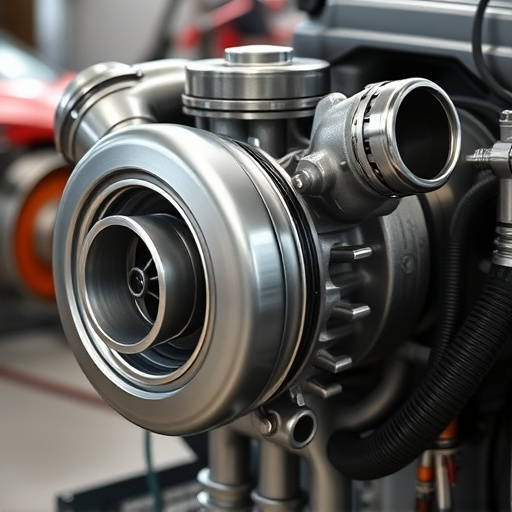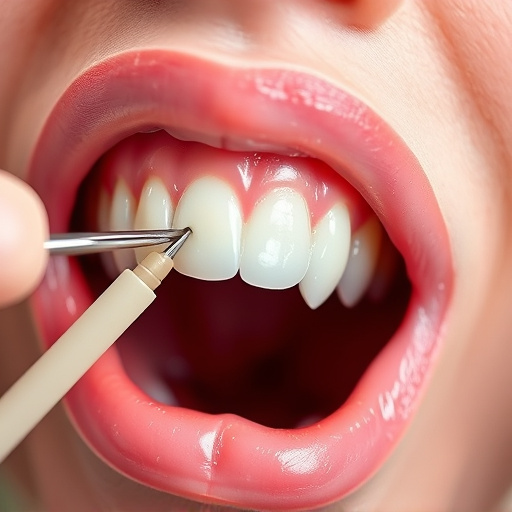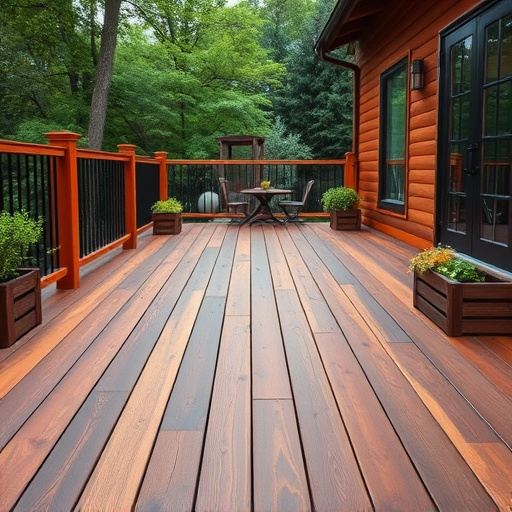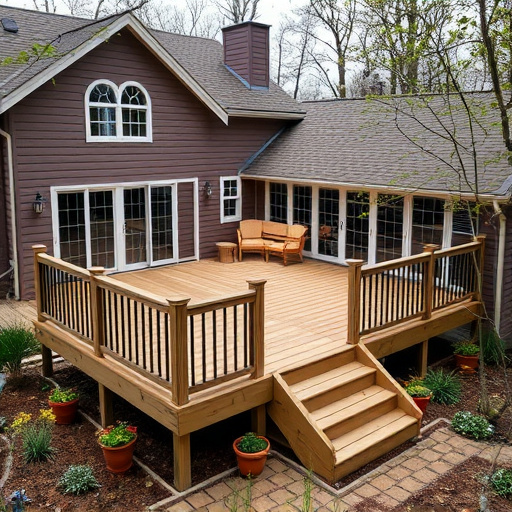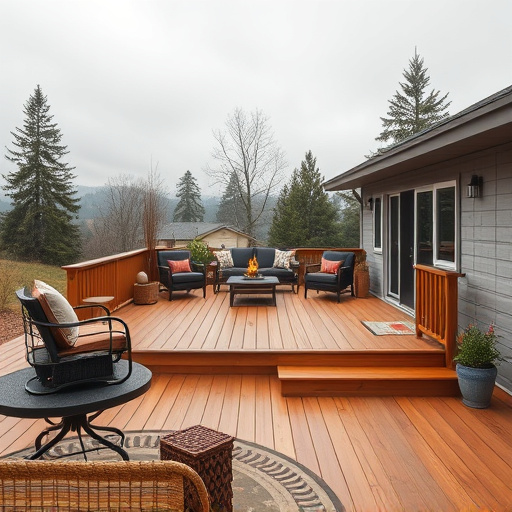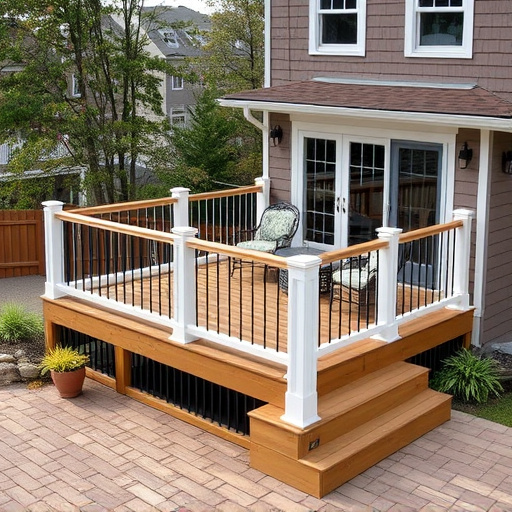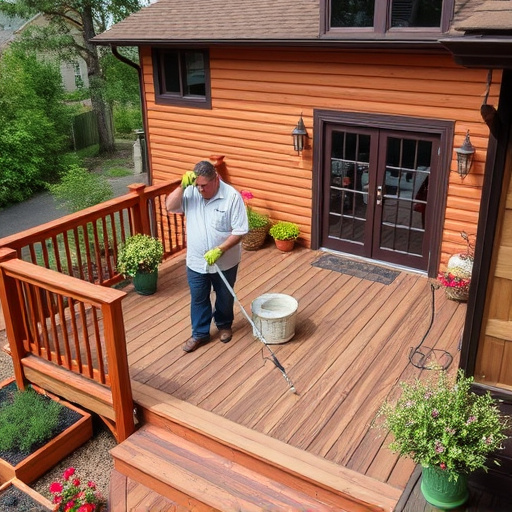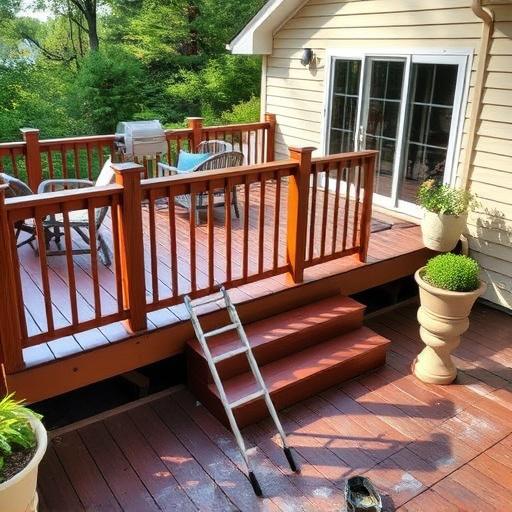Wooden decks are popular for their natural beauty, versatility, and affordability but require significant maintenance, including regular staining and sealing, to prevent rot, insect damage, and fading. They're susceptible to mold in moist climates and can be expensive to repair or replace. Alternative deck materials like composites and synthetics offer lower maintenance, durability, and cost-effectiveness, making them appealing options for homeowners seeking low-maintenance outdoor living spaces.
Choosing the right deck material is essential for any outdoor living space. This guide delves into the pros and cons of popular deck options: wood, composite, and concrete. Wood offers natural aesthetics and versatility at a relatively affordable price but requires regular maintenance. Composite decks provide low maintenance and durability, yet they’re more expensive and not as eco-friendly. Concrete stands out for its extreme durability and custom design possibilities, but it’s costly and time-consuming to install, with potential cold weather issues. Understanding these factors will help you make an informed decision.
- Pros and Cons of Wood Deck Materials
- – Advantages: Natural aesthetics, versatility, relative affordability, easy maintenance (initial), suitable for various climates
- – Disadvantages: High maintenance over time (staining/sealing), susceptible to rot/insect damage, can be expensive for high-end species
Pros and Cons of Wood Deck Materials
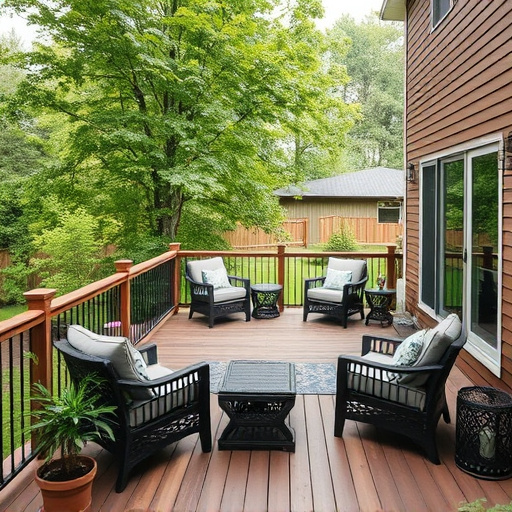
Wooden decks have long been a popular choice for outdoor living spaces due to their natural beauty and versatility. As one of the most common deck materials, wood offers a range of benefits that make it appealing to homeowners. One of its primary advantages is the ability to create unique designs and custom styles, allowing for an extended lifespan with proper maintenance. Treated woods are resistant to rot and insects, ensuring structural integrity over time. Additionally, wood decks can be easily repaired or replaced, offering cost-effectiveness in the long run.
However, there are also considerations when using wood as deck material. It requires regular upkeep, including staining, sealing, or painting to protect against elements like rain and UV rays, which can lead to fading and warping over time. Unlike residential roofing or professional siding options, wood decks may need more frequent maintenance. Furthermore, wood is susceptible to mold and mildew growth in moist environments, requiring additional cleaning and treatment. These drawbacks highlight the importance of careful planning and choosing suitable species and treatments for your deck’s long-term performance.
– Advantages: Natural aesthetics, versatility, relative affordability, easy maintenance (initial), suitable for various climates
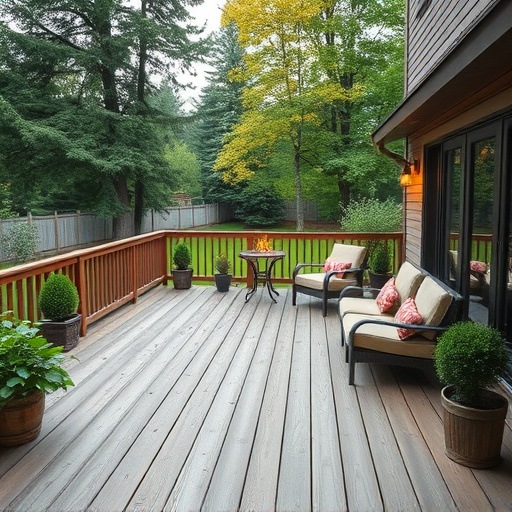
Wood remains a popular choice for deck materials due to its natural aesthetics that enhance outdoor living spaces. Its versatility allows it to be shaped, stained, or finished in various ways to suit different design preferences and architectural styles. Furthermore, wood decks are relatively affordable when compared to other decking options, making them an accessible choice for homeowners looking to improve their outdoor areas. Maintenance is also straightforward during the initial stages, with regular cleaning and occasional sealing or staining needed to preserve the deck’s beauty and longevity. This low-maintenance aspect makes wood a suitable option for almost any climate, as proper care can ensure its durability in both hot, dry regions and colder, wetter environments.
While wood offers many advantages, it’s essential to note that it may require more ongoing maintenance over time compared to some composite or synthetic decking materials. Professional siding and roof replacement services are not typically necessary for wood decks, as they are designed to withstand outdoor elements. However, proper installation and regular care are crucial to ensure the deck retains its structural integrity and appealing appearance.
– Disadvantages: High maintenance over time (staining/sealing), susceptible to rot/insect damage, can be expensive for high-end species
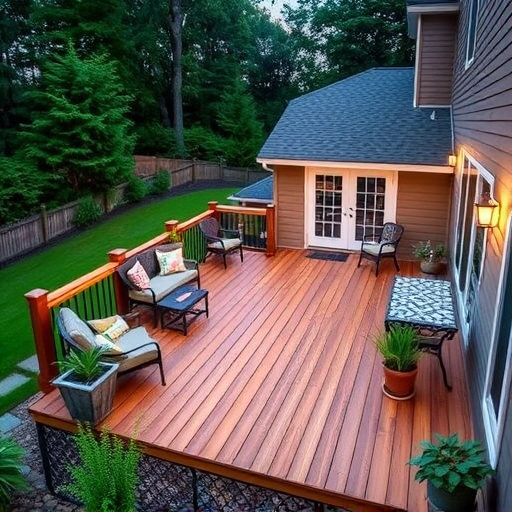
While popular deck materials like wood offer a natural aesthetic and classic charm, they come with significant drawbacks. One of the most notable disadvantages is the high maintenance required over time. Wood needs regular staining and sealing to protect against weather damage and fading, adding an ongoing cost and effort to homeowners. Furthermore, wood decks are susceptible to rot and insect infestations, which can lead to extensive repairs or even replacement if left unchecked. Even with proper treatment, certain high-end species of wood can be incredibly expensive, making them a less financially viable option for many. Additionally, the costs associated with siding repairs, siding and gutters replacement, or even residential roofing renovations due to wood deck failures can significantly offset any initial savings.
When choosing deck materials, it’s clear that wood offers a balance of aesthetics and affordability. Its natural beauty and versatility make it suitable for diverse climates and design preferences. However, the high maintenance requirements over time, including regular staining and sealing, must be considered to prevent rot, insect damage, and potential long-term expense for premium species. By weighing these pros and cons, homeowners can select the best deck material that aligns with their needs and budget.


